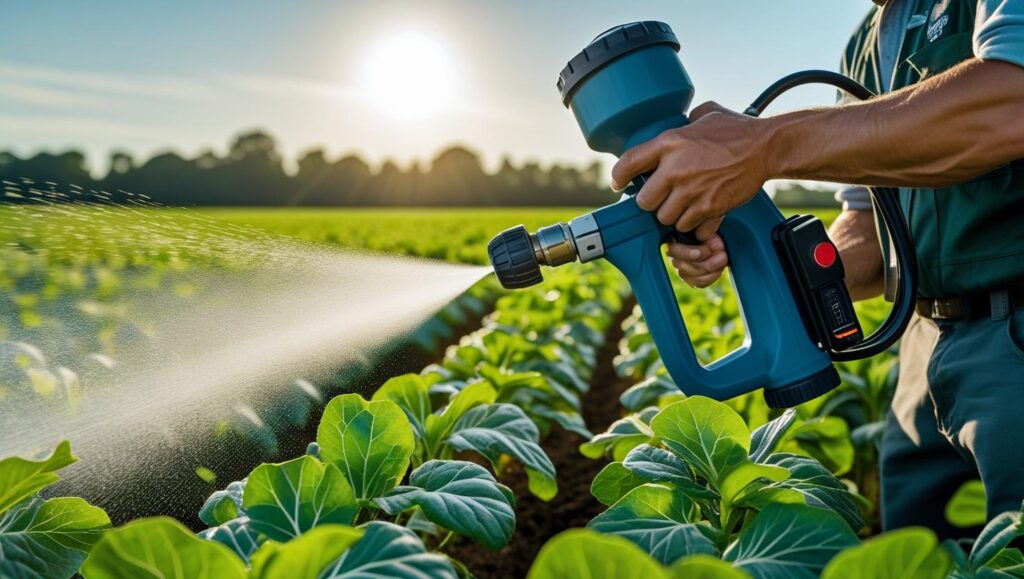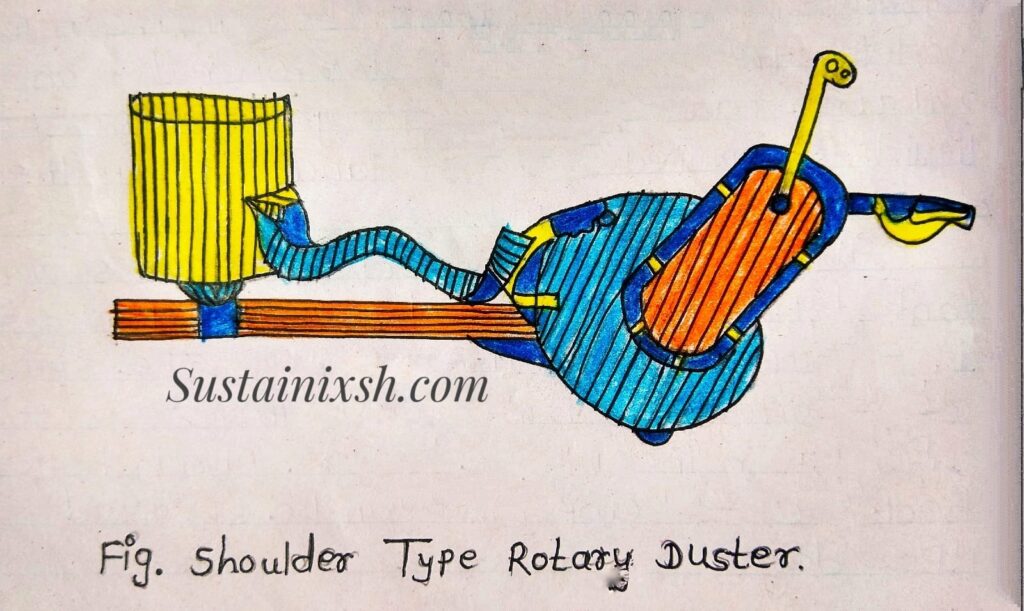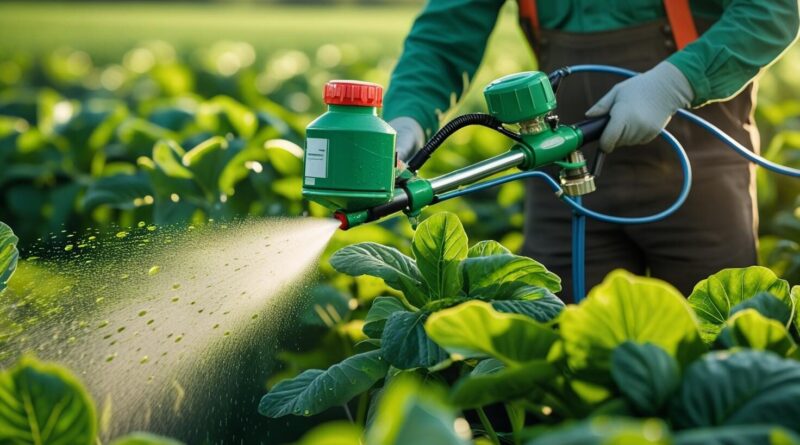Study of Plant Protection Appliances: Sprayers and Dusters
The usefulness of any pesticides depends on their proper application through judicious selection of the plant protection appliances. Insecticides may be applied in liquid, solid, or gaseous forms. It is important to determine the form, formulation, application, timings, etc. of insecticides.

There are three methods of application of insecticides:-
- Spray:- in which a carrier like water or oil is used for the preparation of the formulation of the pesticide.
- Dust:- in which a fine, dry powder is the carrier.
- Fumigants:- are applied as a gas.
- Ideal equipment for using the different types of insecticides should possess the following qualities:-
i) It should be simple and easy to operate.
ii) It should be cheap.
iii) Spare parts should be readily available.
iv) It should be handy, and the cost of operation should be low.
v) Its performance should be of a high degree.

Spraying
It is done with liquid insecticide formulated as a suspension, emulsion, or solution. The spray droplets of the liquid insecticide vary widely in size from 30-150 microns. The size depends on the type of sprayer used. The droplets combine to form a film on the sprayer, and after some time, a deposit of insecticide is left. The water or oil, or any other solvent is evaporated.
When water is a carrier, the usual method of application of the spray is by passage under pressure through special nozzles, which distribute the chemical in a fine spray over the crops. Due to the increased effectiveness of new organic insecticides, spraying is the most Common means of application. The knapsack sprayer is successfully used throughout the world for spraying pesticides over small areas.
- Knapsack Sprayer:- It consists of a spray container that mounts comfortably on the back of the operator and is supported by straps over the shoulder. A double-action pump is built either inside or outside the spray Container and is operated by working a lever which projects alongside the operator’s body. In some models, the pump lever also operates on agitation Paddle in the spray tank. The spray liquid is applied through a lance held in the operator’s free hand.
The lance is connected to the spray tank by a long, flexible hose. The tank capacity is usually about 5 gallons. The sprayer being portable and handy, it can be used for spraying in inaccessible areas. About half a hectare of a Crop field can be sprayed per day.

Dusters
Duster is an equipment used for the application of dry powdered poison to the plant body or insect. Dusting is generally best done easily in the morning when there is no wind or late in the evening after the dew has fallen.

Shoulder Type Rotary Duster:-
It consists of a Container (hopper) for the dust, a system of agitation to disturb the dust, and a feed mechanism to pass the dust into a current of air which is carried through an outlet as a turbulent cloud. This is a manually operated rotary type of duster.
In this type of duster, a fan is driven off and hand cranked through a reduction gear produce an air stream. The air mixed with dust then travels through a pipe & comes out as finely dispersed dust particles in the air through the terminal opening. The duster is provided with shoulder straps for fastening to the shoulder of the operator. The capacity of the hopper ranges from 4-5 kg & is useful for dusting row crops as well as bushy trees. This type of duster can dust half to one hectare of field crops per day.
- Advantages of Dusting over Spraying:-
- Prepared in less time.
- Economic areas where water is scarce.
- Easier to apply.
- Machinery for application is light and less complicated.






White useful applications are this. Excited to know more about this.